AI to Seed Sowing Bots: Meet the Team Teaching 24000 Govt School Kids Robotics
Implementing Finland’s and Estonia's ICT education model for Indian students of government schools, Payal Manan Rajpal's Robotex India is bridging the digital divide in those communities that are often left behind by our public education system.
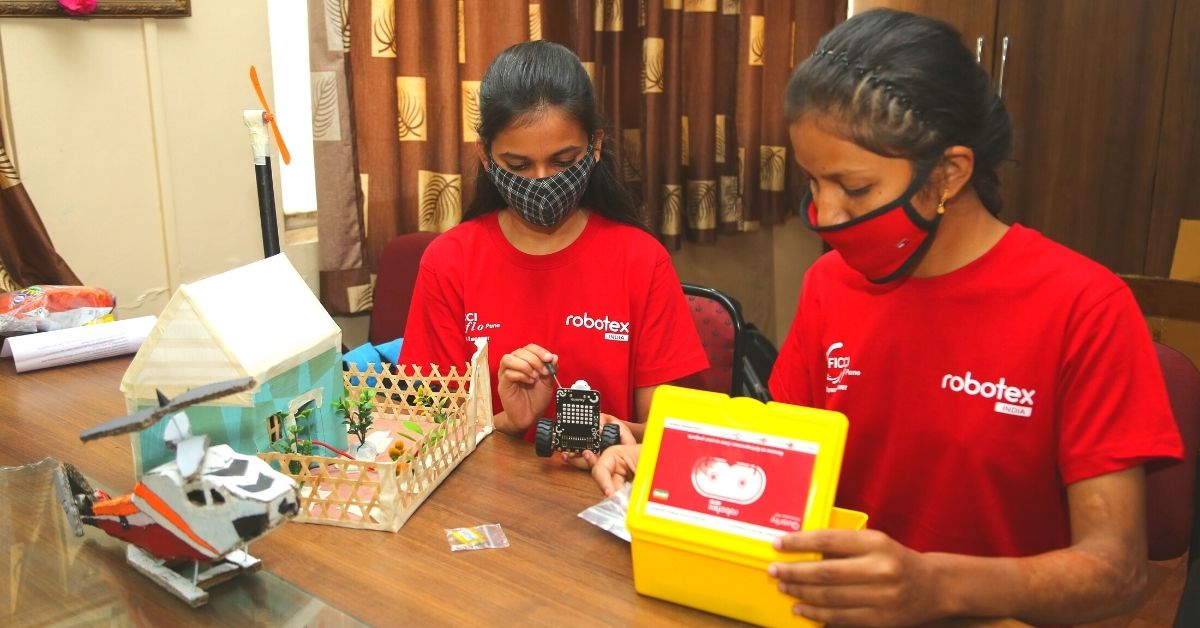
There was a moment in 2018 when Payal Manan Rajpal, the founder of Robotex India realised what needed to be done.
(Image above of government school students working a robotics project courtesy Robotex India)
The non-profit imparting future skills education (robotics, coding, artificial intelligence, IoT) to children from less privileged government schools was organising their first National Championship.
During one of the competitions, an 8-year-old boy studying in a Gujarati medium school came up to Payal and said something that would change the trajectory of her work for the next four years.
“This child wasn’t dressed in a uniform or private robotics classes branded t-shirt and his robot didn’t look as compact and snazzy, but the project was focused on solving a real-time problem. To assist his father, a small farmer living on the outskirts of the city who owned no cattle but needed to sow seeds on time, he created a seed sowing bot. He won second place in that competition, and that’s when I asked him about his bot, how he built it and where he learned robotics from,” Payal recalls in a conversation with The Better India.
“His interest in robotics came from his father being unable to fulfil his farming tasks in a given time frame. His mother, meanwhile, was a house help in one of the more affluent families in the city. The bot was a ‘hand-me-down’, which was given to him by a fellow 8-year-old who lived in the house. This child would go with his mom to her place of work, which had Wi-Fi, visit YouTube on his mother’s phone, learn from online tutorials, discuss the project with the affluent child living in the house, and that’s how he built the bot.”
Given how most of the 5,000 students who had participated in the National Championship in 2018 were from affluent families who could afford extra-curricular classes to learn robotics, this boy’s achievement was noteworthy. If this child with no guidance could make a seed sowing bot, she believed Robotex India could help thousands of less privileged children like him by teaching them robotics and coding.
Inspired by events like these, Robotex India launched ‘Robotex for Rural’, a two-level programme largely funded by funds generated from the corporate social responsibility (CSR) wing of large private corporations, teaching students from less privileged backgrounds the basics of coding, programming, AI and kit-based training for robotics, in 2019. In addition, they started a parallel wing to Robotex for Rural called ‘Girls Who Build Robots’ as well to facilitate greater participation of girls in acquiring STEM based future skills.
“It was amazing to see how students from marginalised backgrounds living in one-room homes without regular electricity or WiFi connection were able to create these amazing projects. We taught our first batches of students in 2019 under ‘Robotex for Rural’, predominantly consisting of children from Ashram Shalas (tribal residential schools) in Gujarat and Maharashtra. We organised boot camps for approximately 3,000 children in Ashram Shalas which had a ICT lab. Trainers from Robotex India would visit a rural government school and organise workshops where each child would acquire about 20 hours of training,” claims Payal.
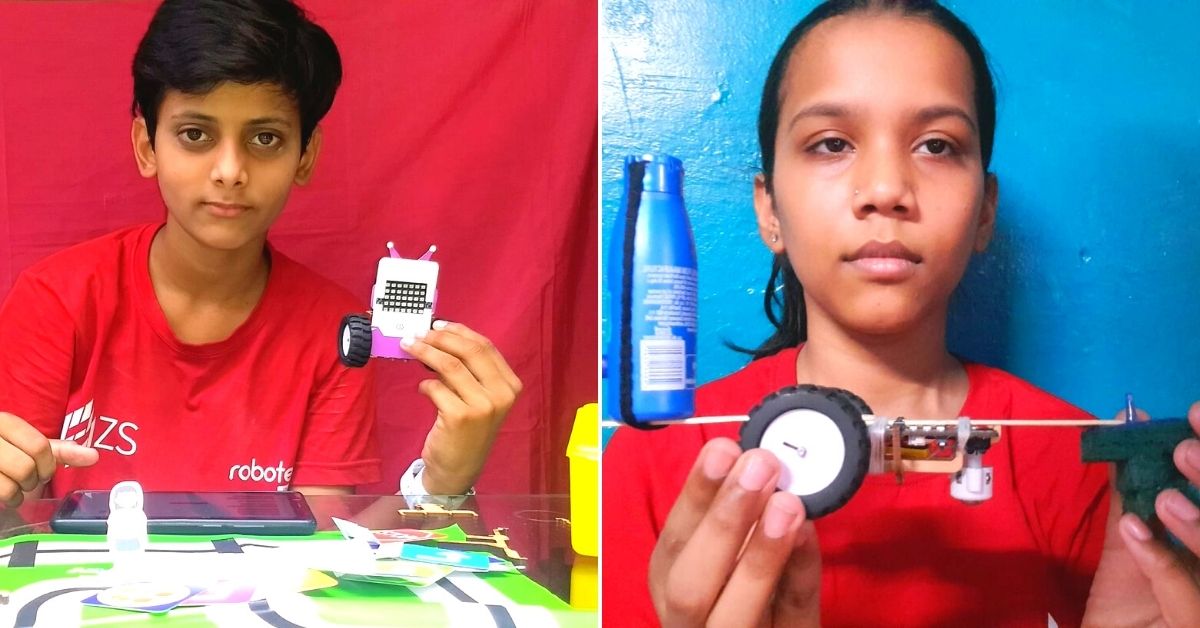
Future Skills for Future Generations
Robotex India is an offshoot of Robotex International, a global non-profit launched 22 years ago with the fundamental idea of providing a technological platform for K-12 (kindergarten to Class 12), college and university students, and early-stage startups to showcase their innovations in the areas of robotics predominantly.
A few years later, AI, coding, and IoT became a part of the projects that were displayed at Robotex International, which organises global competitions. Based out of Estonia, they have a presence in 41 countries.
“We work in collaboration with state governments, schools, universities and organisations in campaigning STEM (Science, Technology Engineering, and Mathematics) education, research and innovation led robotics projects to propel growth and development especially for those who are identified as sitting at the base of the income pyramid. There is a huge dearth of specialisations in these future skills in India, which according to World Economic Forum 2030, are the imperative technical skills and life skills to be employable,” she says.
Payal goes on to add that in most European countries and China, a child usually learns coding at the age of 4.5 and starts doodling about robotics and AI kits at about 6. “When we had our Robotex Asia event in Shanghai in 2019, there were at least 4,000 children under the age of 8 creating, building and coding robots. In India, we found most children over the age of 10 engaged in such projects and that too largely from privileged backgrounds,” she says.
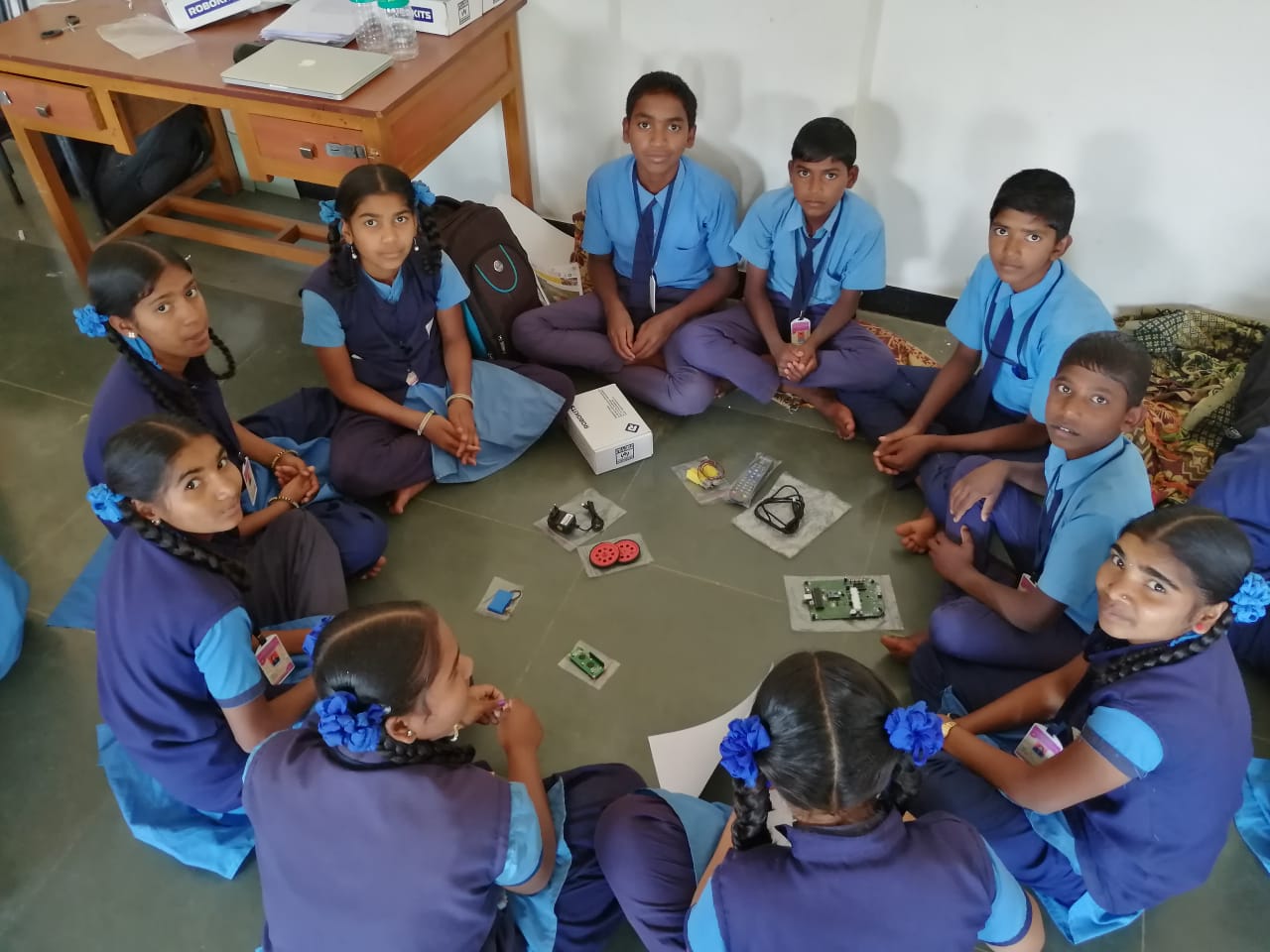
Robotics and Coding for the Marginalised
In March 2020, as COVID-19 began to shut down classrooms, Robotex India and FICCI FLO Pune, the women’s wing of the Federation of Indian Chambers of Commerce and Industry, organised the first and largest digital hackathon in India alongside the Ministry of Electronics and Information Technology under the Government of India.
They successfully concluded the event on 5 April 2020, which had 15,000 entries and 3,200 participants who had built 280 non-medical solutions for COVID-19 from low-cost ventilators, digital AI hospitals to aqua hand sanitisers. The youngest participant, an 8-year-old from Hyderabad, built a last-mile delivery drone, while the oldest was a 63-year-old data scientist working out of Coimbatore who created an aqua hand sanitiser.
“When we organised this all India-level hackathon online in two months digitally, that gave us the confidence to go further. Government schools were shut, but children (or more often their parents) still have phones. When the pandemic hit, causing an involuntary shift to the virtual environment, it also took away the ability of classroom learning for rural and government school students. We knew that it was about time to find the best possible option to help these eager learners. Robotex India replicated the offline teaching module to present a country-wide digital solution to bridge the digital divide,” says Payal.
“We successfully taught robotics, coding and AI to over 24,000 students across 5 states [Gujarat, Maharashtra, Delhi, Karnataka and Telangana] who came from the low strata of society, had no access to computers, regular electricity, WiFi and lived in households with often just one phone. The students connect virtually in groups with the help of smartphones. In case connectivity is a problem, our volunteers ensure the children can access these videos and sessions after the live classes from the Learning Management System (LMS). In case of any queries, our technical trainers (domain experts volunteering with Robotex India) are always available via WhatsApp. Also, there are WhatsApp groups where students can also help their peers out in case of any difficulties,” says Manisha Sawant, Head of Operations with Robotex India.
The final output was capstone projects made by students solving real-world problems using robotics, coding and AI ranging from a floor disinfection bot, a talking bot for staying home, a mini JCB to a biomedical waste-collecting bot, bicycle, creative virtual games like one based on the Mars Rover and videos presenting solutions for the environment.
“We quickly replicated our models to online learning models via LMS and Zoom lessons. Our LMS is a virtual digital classroom. There are chapters to read, pre-recorded videos to watch, quizzes and assessments to take. For students who miss out as a result of lack of regular electricity, shortages in data or no device as a result of parents not at home, we save the Zoom lessons on our LMS for them to view later. This LMS works like an Amazon Prime which is downloaded on a phone. Even if you have a 3G network, the phone downloads and updates all lessons every time the phone makes contact with the network,” explains Manisha.
Students can log into the LMS with their registered mobile number. Once they submit their number, they receive a six-digit OTP, which they enter. Once they do, the LMS page will open which presents the entire syllabus taught to them. The syllabus is divided into two portions.
Level 1: Students are taught the basics of robotics and given an introduction to AI, programming and coding. After covering every lesson plan/topic (there are 12 lesson plans in Level 1), they have to attempt a quiz (only allowed a limited number of attempts).
Based on these quiz results, trainers move on to Level 2 teaching students coding with their robotics kits. For a few schools, these lessons are taught in the regional vernacular.
Few of the Zila Parishad schools are English-medium, where they conduct our classes in simple English and Hindi as well. “We teach coding to children on an open-source Scratch platform. When you see a lot of the robotics companies, they run on software that is not open source. That restricts the amount and variety of projects a student can do. However, even the famed MIT has an open-source Scratch available to students, which we use as well,” says Manisha.
Level 2: During the lockdown, Robotex India shipped the bots to these government schools. The parents would come there, collect the bots for the students, some of whom were also donated Lenovo tablets, while others had parents with mobile phones.
“Once they learn to code, we assess their work and ship the bots to the school which is then collected by the parents. On the LMS, students are also offered pre-recorded videos for their reference as well. Before the start of each class, students are allowed to clear any doubts or pose any questions that they may have for their trainers,” explains Manisha.
Take the example of Shani Pawar, a student from Mahatma Jyotiba Phule, Pimpri-Chinchwad Municipal Corporation school, who understands the importance of correct disposal of biomedical waste. In this project explained below, he shows how a robot dustbin can be used to dispose of medical waste without anyone having to touch it. He learnt how to build a robot through Robotex India’s ‘Build Your First Robot’ programme in partnership with Teach for India Pune and backed by sponsorship from the CSR arm of ZS Associates.
“It’s a remarkable project given his circumstances. The child of a single mother, who works as a security guard, he barely had an attendance of 50% because it was difficult for him to have a phone in hand at all times. Even during the lockdown, his mother still had to report for duty. Whenever the device was available, he would find time to learn,” she explains.
“We work directly with State governments and Zila Parishads. In Pune, for example, Ayush Prasad, the Zila Parishad CEO, allocates education officers in all Talukas for our work. We are currently working on a cyber smart programme in collaboration with WNS Cares where 5,00,000 children have been educated on major issues pertaining to cyber security. Currently, we are working very closely with headmasters of each school in every taluka of the Zila Parishad of Pune to roll out this Cyber Smart programme for 3,200 ZP schools covering over 8,00,000 students. For our robotics lesson rollout as well, we work with similar partners. Take the example of our Zila Parishad school in Lonikand, where ZS Associates are our sponsor. Our team interacts with the education officers, principals to get the workshop rolling,” informs Payal.
Long Term Vision
“We want to do these workshops for children who will eventually participate in international Robotex Championships, get exposure to global universities, larger corporates and startups, so that their working prototype projects can be adopted. Our objective is to also encourage entrepreneurship at an early age. The potential is there. Our 2019 batch consisting of children from tribal communities, often completed 75 per cent of the Line Follower track at the Robotex Championships, which is a very difficult level even for private school children with the snazziest of robots because it has a lot of hurdles built-in. As much as you calibrate your bot, you get only three attempts which even private school kids struggle with,” recalls Payal.
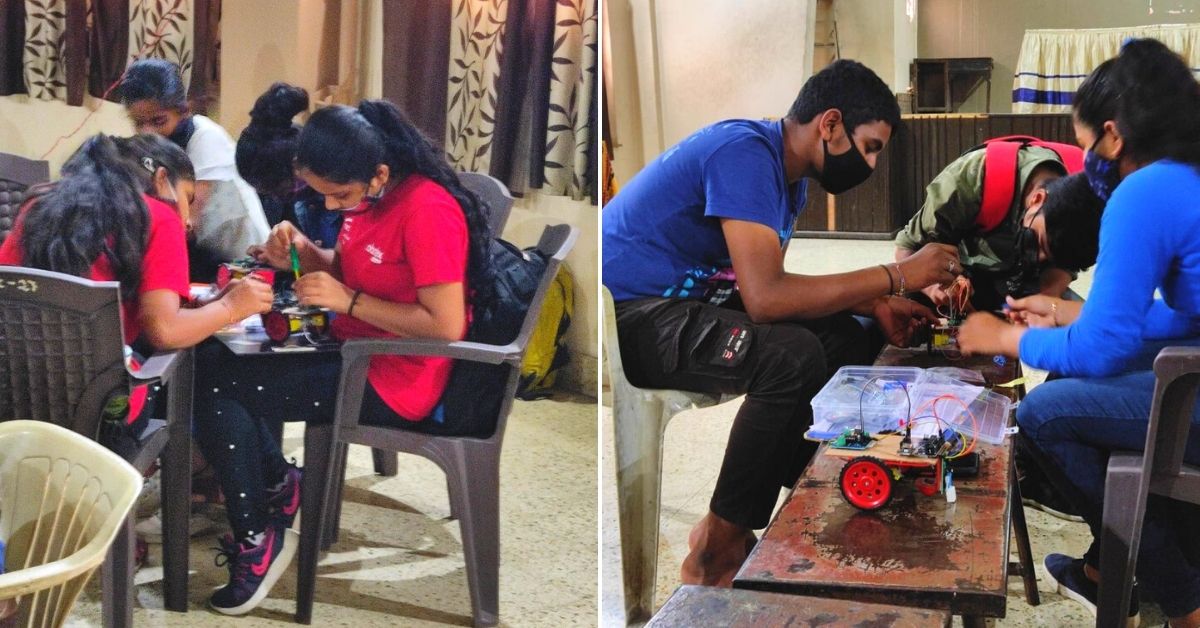
Students are trained to build Line Follower Robots, i.e. designing a robot that will move/stop depending on the source of light and sensors following a track. These line follower robots can be integrated into various projects about agriculture, defence and various other industries. Under their competitions, Robotex championships also organise competitions like Girls’ Firefighting, 3 Kg or 5 Kg LEGO and Sumo (LEGO and Sumo robot has to push its opponent out of the ring while following all the rules of competition) and Young Scientist Competition and Entrepreneur’s Challenge (where they implement the robotics building they learned into making working prototypes).
Through their workshop series, Robotex India is looking to get these children to participate first in regional championships, followed by national championships. Once they make their mark there, they are taken to Asia Championships and International Championships organised by Robotex International, where they get to interact with competitors from around the world, industry persons and even potential investors, giving them the right sort of exposure.
Although Robotex India has started with a two-level coding, robotics and AI programme in 2019, there are a total of five levels that students will need to clear by 2025 with regular financial support from their CSR partners.
To this end, they have devised a ‘Five-Year Mission’ for their students.
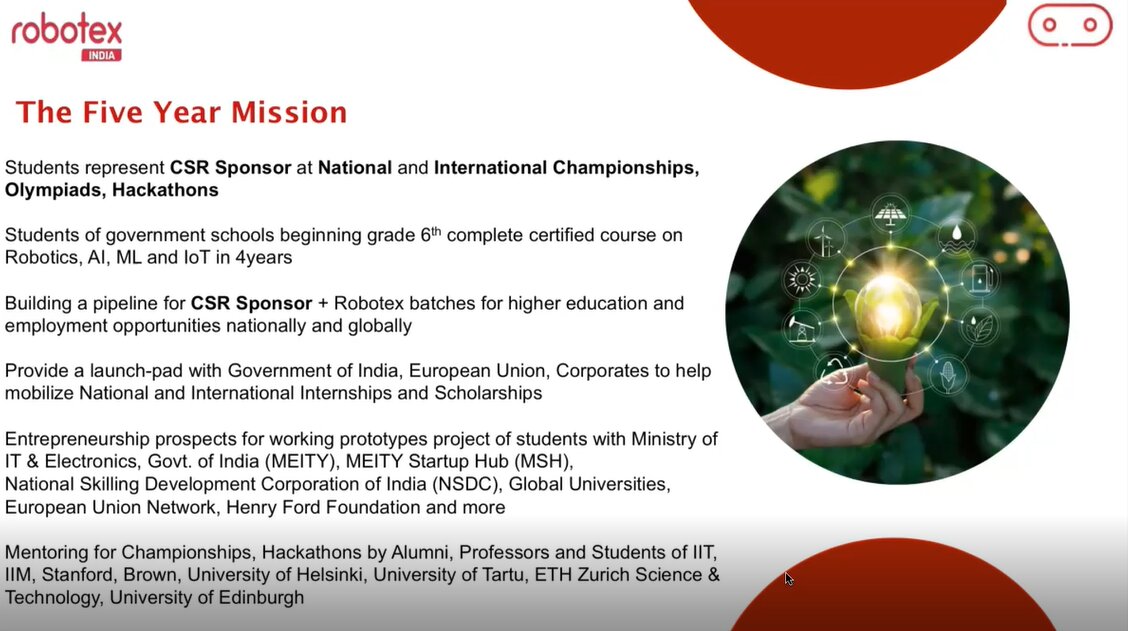
Another key objective for the future is teacher training. Thus far, Robotex India has imparted training to over 1,000 teachers in government schools as well and plans to expand this further, while also building STEM Robotics laboratories in government schools across 3 states.
Implementing Finland’s and Estonia’s ICT education model for Indian students of government schools in alignment with the Indian government’s National Education Policy 2020, Robotex India is bridging the digital divide and safeguarding the career goals of children from those communities who are often left behind by our public education system.
(Edited by Yoshita Rao)
Like this story? Or have something to share? Write to us: [email protected], or connect with us on Facebook and Twitter.

Similar Story

‘I Had Decided to Drop Out of IIT Entrance Exams, Until My Dad’s Words Changed My Life’
Ganesh Balakrishnan’s life took a turn when he faced health issues a month before his IIT-JEE exam. Despite feeling disheartened and at the verge of dropping out, his father’s advice helped him overturn his luck.
Read more >
If you found our stories insightful, informative, or even just enjoyable, we invite you to consider making a voluntary payment to support the work we do at The Better India. Your contribution helps us continue producing quality content that educates, inspires, and drives positive change.
Choose one of the payment options below for your contribution-
By paying for the stories you value, you directly contribute to sustaining our efforts focused on making a difference in the world. Together, let's ensure that impactful stories continue to be told and shared, enriching lives and communities alike.
Thank you for your support. Here are some frequently asked questions you might find helpful to know why you are contributing?


This story made me
-
97
-
121
-
89
-
167












